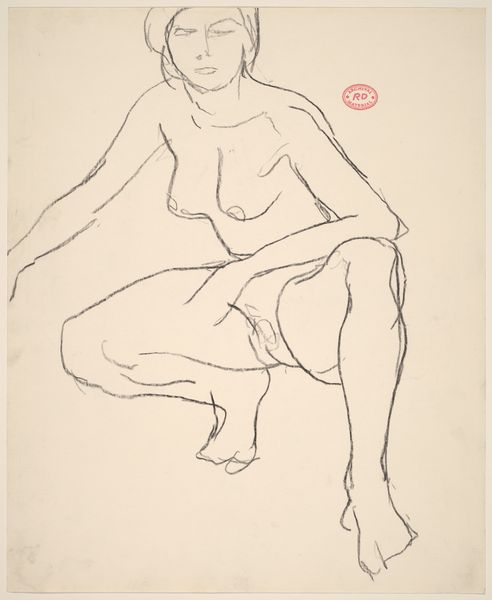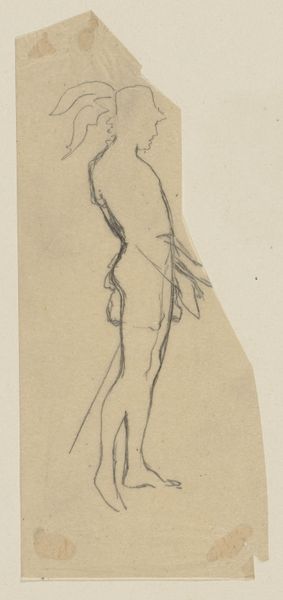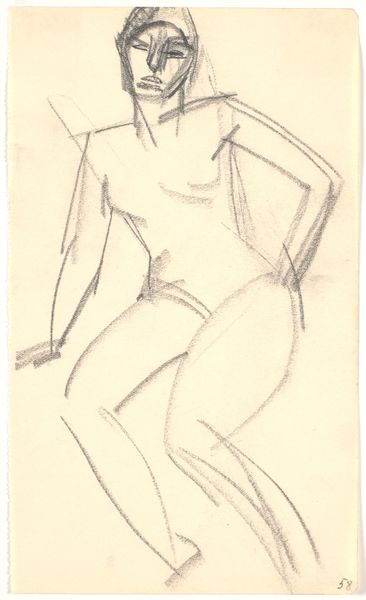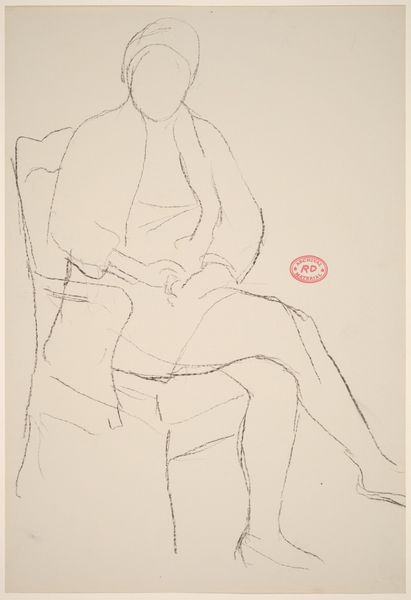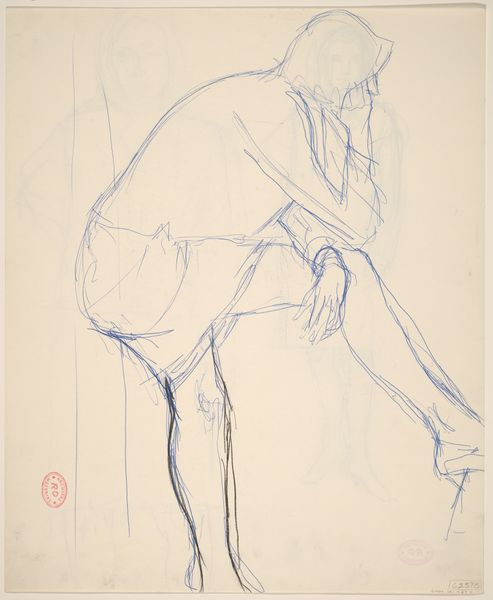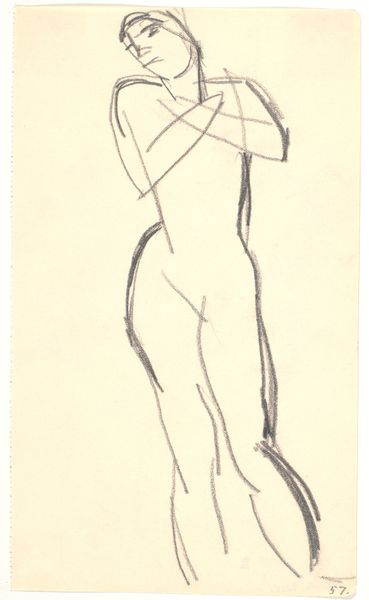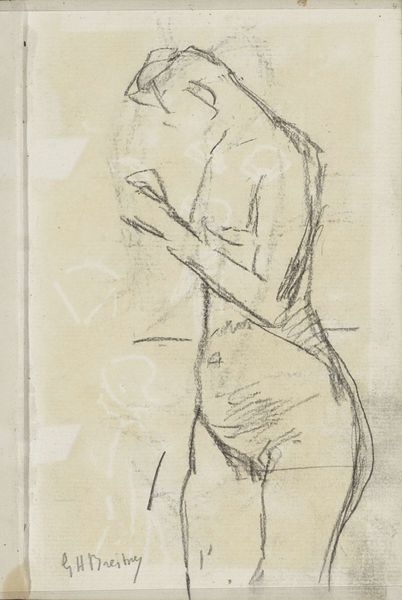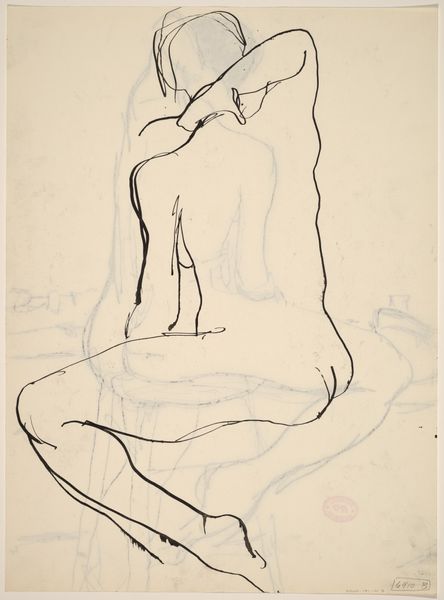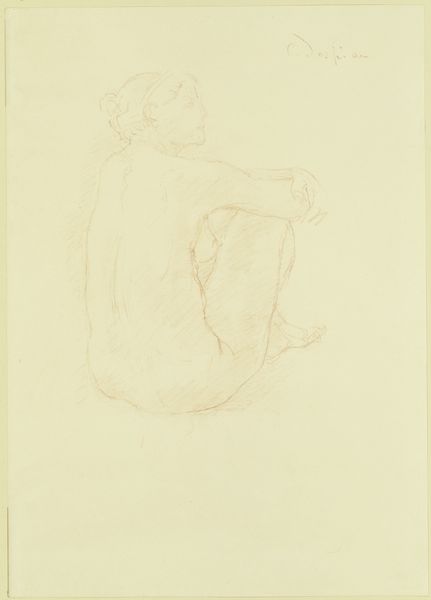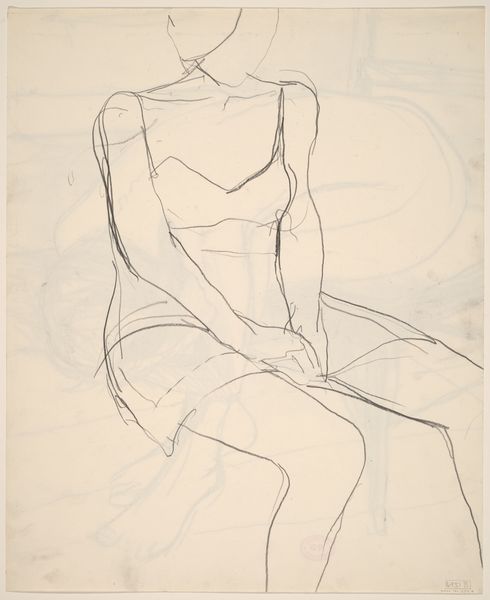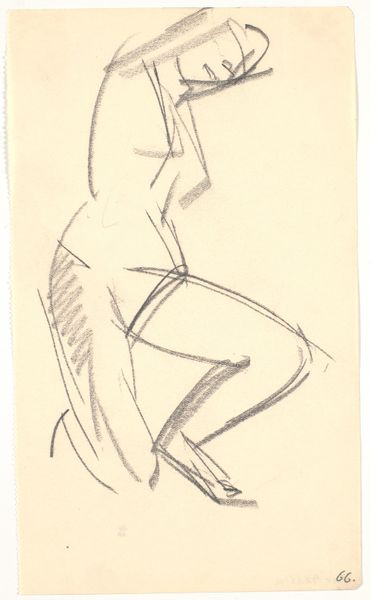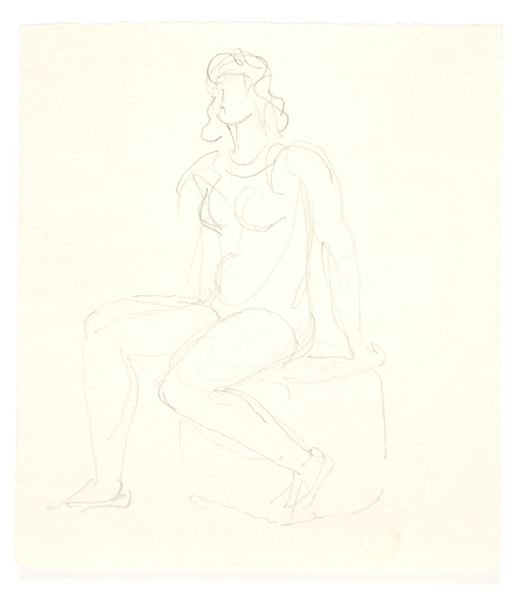
drawing, pencil
#
portrait
#
drawing
#
self-portrait
#
pencil sketch
#
figuration
#
pencil
#
portrait drawing
Dimensions: 468 mm (height) x 356 mm (width) (bladmaal)
Editor: We’re looking at "Siddende kvindelig model," a pencil drawing by Harald Giersing, made sometime between 1881 and 1927. It’s currently held at the SMK in Copenhagen. I’m immediately struck by how raw and unfinished it feels, yet the pose of the figure is so compelling. What do you see in this piece? Curator: What immediately catches my attention is the line quality. Notice the varied pressure applied by the artist's hand. In some areas, the lines are faint, almost tentative, merely suggesting form. Elsewhere, particularly around the figure's outline and areas defining mass, the pencil work is much bolder. Editor: So it’s about how he actually used the pencil? Curator: Precisely. Consider how Giersing constructs the figure not through shading or traditional modeling, but through a network of lines. This directs our gaze across the surface, creating a sense of dynamism and movement despite the seated posture. How do the planes overlap? Where does he chose to intensify the lines and create shadow? These are important to note. Editor: That makes sense. So the tension between the loose lines and the more defined areas actually creates the form. Curator: Indeed. It pushes the boundaries of representation, asking us to engage with the artistic process itself. The visible construction becomes part of the aesthetic experience, leaving you to fill in the details and contemplate the way shape informs the art as a whole. What do you make of that technique? Editor: I hadn’t really considered that, but seeing how the simple medium and strokes add a new perspective on an otherwise simple composition has been so rewarding. Curator: I'm glad it sparked some insights for you; looking closely can often change our relationship with any kind of art.
Comments
No comments
Be the first to comment and join the conversation on the ultimate creative platform.

